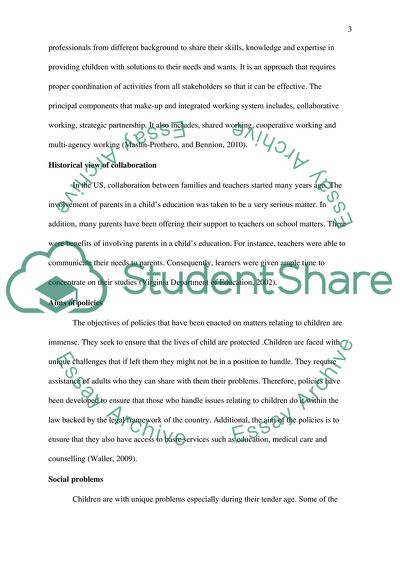Cite this document
(Policies, Integrated Working, and Improved Outcome for Children Case Study Example | Topics and Well Written Essays - 2250 words, n.d.)
Policies, Integrated Working, and Improved Outcome for Children Case Study Example | Topics and Well Written Essays - 2250 words. https://studentshare.org/sociology/1865339-policies-integrated-working-and-improved-outcome-for-children
Policies, Integrated Working, and Improved Outcome for Children Case Study Example | Topics and Well Written Essays - 2250 words. https://studentshare.org/sociology/1865339-policies-integrated-working-and-improved-outcome-for-children
(Policies, Integrated Working, and Improved Outcome for Children Case Study Example | Topics and Well Written Essays - 2250 Words)
Policies, Integrated Working, and Improved Outcome for Children Case Study Example | Topics and Well Written Essays - 2250 Words. https://studentshare.org/sociology/1865339-policies-integrated-working-and-improved-outcome-for-children.
Policies, Integrated Working, and Improved Outcome for Children Case Study Example | Topics and Well Written Essays - 2250 Words. https://studentshare.org/sociology/1865339-policies-integrated-working-and-improved-outcome-for-children.
“Policies, Integrated Working, and Improved Outcome for Children Case Study Example | Topics and Well Written Essays - 2250 Words”. https://studentshare.org/sociology/1865339-policies-integrated-working-and-improved-outcome-for-children.


